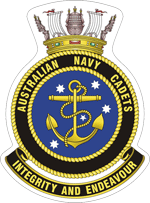
Dinghy sailing is the activity of sailing small boats by using five essential controls:
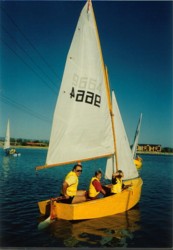
The Heron Dinghy is a dinghy designed by Jack Holt of the United Kingdom as the Yachting World Cartopper. The Heron dinghy was designed to be built by a home handyman out of marine ply over a timber frame, but can now also be constructed from marine ply using a stitch and glue technique or from Fibreglass. Modern dinghies will usually have built in buoyancy tanks, older craft will have bags or retrofitted tanks.

The Europe is a one-person dinghy designed in Belgium in 1960 by Alois Roland as a class legal Moth dinghy. The design later changed into its own one-design class.
Jack Holt, OBE (1912–1995) was a prolific designer of sailing dinghies. His pioneering designs of dinghies using plywood did much to popularise the sport of sailing in the period immediately following World War II.

The Laser 4.7 is a one-design dinghy class in the Laser series and is a one-design class of sailboat. All Lasers are built to the same specifications. The Laser is 4.06 m long, with a waterline length of 3.81 m. The hull weight is 59 kg (130 lb). The boat is manufactured by Laser Performance.

The Flying Dutchman (FD) is a 20-foot one-design high-performance two-person monohull racing dinghy. Developed in the early 1950s in the Netherlands, its large sail area per unit weight allow it to plane easily when sailing upwind. The boat utilizes a trapeze harness for the crew and hiking straps for the skipper to counterbalance the wind force on its sails. It made its Olympic debut at the 1960 Olympic Games.

The Byte is a small one-design sailing dinghy sailed by one person. It was designed by Canadian Ian Bruce, who also commissioned and marketed the Laser.
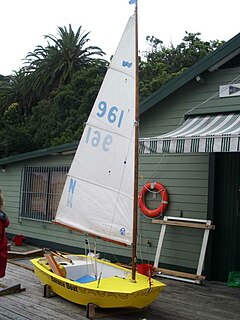
The Sabot is a sailing dinghy that is sailed and raced singlehandedly usually by young sailors in various parts of the world.

The Cadet is a class of sailing dinghy designed to be sailed by two children up to the age of 17. It is a one-design class, originally designed by Jack Holt in 1947. Cadets are sailed worldwide in more than 40 countries.

The RS300 is a modern racing sailing dinghy made by RS Sailing. The RS300 is a one-design, single-handed, hiking dinghy with a PY of 972. Designed by Clive Everest and first produced in 1998, it is inspired by the International Moth, of which Everest was a successful designer.

The Tempest is a one design two man high performance keelboat with a trapeze. It was designed by Ian Proctor for the 1965 trials for the new Olympic Keelboat, which it won convincingly.
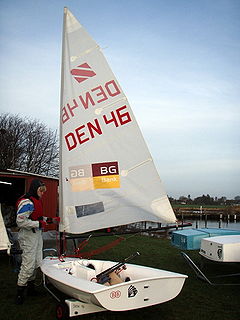
The Zoom8 is a youth racing dinghy sailed in Denmark, Sweden, Norway, Finland, Austria, the Netherlands, Estonia, Latvia and Russia. It is designed by the Finn Henrik Segercrantz. The Zoom8 is considered an excellent transition dinghy from the Optimist and the more physically demanding dinghies such as the Laser, Europe and 29er, and although many attempts have been made by other classes to fill this gap, the Zoom8 dinghy is one of the few to have succeeded.

The Cherub is a 12 feet long, high performance, two-person, Planing dinghy first designed in 1951 in New Zealand by John Spencer. The class is a development class, allowing for significant variation in design between different boats within the rule framework. The minimum hull weight was originally 110 lbs.

Burghfield Sailing Club is an inland sailing club located close to the town of Theale in Berkshire near Reading in the south of England. The club and lake are easily seen from the M4 motorway as the westbound lane approaches Junction 12. BSC was one of the first Clubs in the UK to be awarded RYA Champion Club status.

The RS400 is a light-weight sailing dinghy designed by Phil Morrison and manufactured by RS Sailing. The dinghy is sailed by two people and has a main, a jib and an asymmetric spinnaker. It has a PY of 948 and a D-PN of 82.3.
Chris Law was a British sailor who was a winner of the Finn Gold Cup in 1976. His talent was sometimes overshadowed by his bad luck and volatile temperament. He died at Lake Constance in 2007.
The RS700 is a single-handed racing dinghy built by RS Racing and designed in 2000 by Nick Peters and Alex Southon as part of the RS series and built in 2001. It is raced in many sailing clubs around Britain, with a PY number of 850 and a D-PN of 73.3.
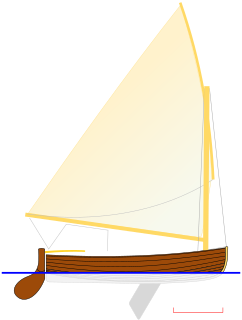
The Twelve Foot Dinghy was designed by George Cockshott, an amateur boat designer from Southport, England in response to a 1912 design contest. It became the first one-design racing dinghy to achieve international recognition.The class was granted the 'International' status by the IYRU in 1919 and remained this status until 1964 when it was revoked by the same authority. The class was selected as one of the Olympic classes for the Olympics in 1920 & 1928.
The RS Vision is a Sailing dinghy created by RS Sailing designed for 2 crew members. It can, however, be sailed by a larger crew or be single handed. It is sailed at many clubs around the world.

The Farr 3.7 is a one-person sailing dinghy designed by Bruce Farr in 1971. The design plans are sold by the 3.7 Class Owners Association and they are built by a mix of professionals and home built by amateurs. The 3.7 Class is recognised by Yachting New Zealand as a national class and yachts are sailed in New Zealand, Australia and Great Britain. Full sets of plans have been sold worldwide to a number of individuals with greatest numbers in Germany, Japan, USA, South Korea, Poland, France, Belgium.



